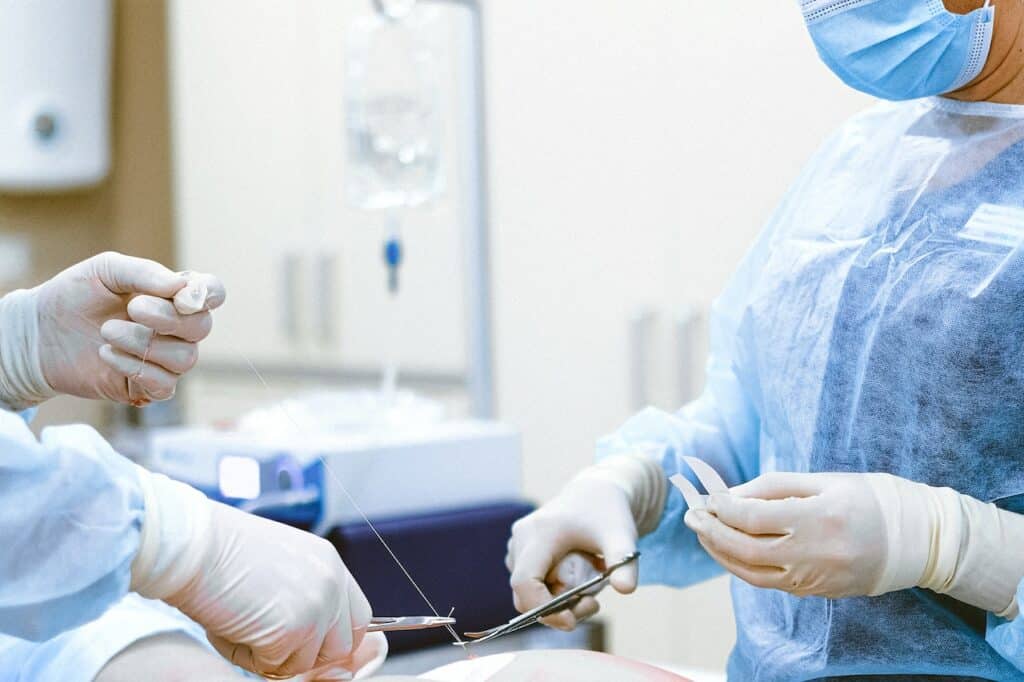Hospitals are known for charging for various services, but one that has recently caught the attention of many is the charge for skin-to-skin contact after birth. Skin-to-skin contact is a widely accepted practice that has been shown to have numerous benefits for both the mother and the newborn. However, the practice is not always covered by insurance and can come with a hefty price tag.
Understanding why hospitals charge for skin-to-skin contact requires an understanding of hospital policies and charges. Hospitals have a variety of fees for different services, and skin-to-skin contact may be considered an additional service that is not covered by insurance. Additionally, hospitals may charge for the use of equipment or facilities during the practice.
Despite the potential charges, nurses play a crucial role in promoting skin-to-skin contact and encouraging parents to engage in the practice. Nurses can educate parents on the benefits of skin-to-skin contact and provide support during the process. However, it is important to note that safety considerations must also be taken into account in hospitals, and nurses must follow proper protocols to ensure the safety of both the mother and the newborn.
Key Takeaways
- Hospitals may charge for skin-to-skin contact, which is not always covered by insurance.
- Nurses play a vital role in promoting and facilitating skin-to-skin contact.
- Safety considerations must be taken into account during skin-to-skin contact in hospitals.
Understanding Skin-to-Skin Contact

Skin-to-skin contact is a practice that involves placing a newborn baby, naked except for a diaper, on the bare chest of their mother or father. This practice is also referred to as kangaroo care. It is a simple, yet effective way to promote bonding between parents and their newborns.
During skin-to-skin contact, the baby’s body temperature, heart rate, and breathing respond to the warmth and rhythm of the parent’s body. This can help to regulate the baby’s body systems and promote a sense of calm and security.
Skin-to-skin contact is not just beneficial for the baby, but also for the mother. It can help to reduce stress, promote milk production, and enhance the mother’s sense of confidence and well-being.
Despite the many benefits of skin-to-skin contact, some hospitals may charge for this service. These charges may include fees for the use of equipment, such as a special chair or bed, or for the assistance of a nurse or other healthcare provider.
It is important for parents to understand the reasons behind these charges and to advocate for their right to skin-to-skin contact with their newborn. By working together with their healthcare providers, parents can ensure that their baby receives the best possible care and support during this critical time.
Hospital Policies and Charges

Hospitals have different policies regarding skin-to-skin contact after birth. Some hospitals allow it immediately after delivery, while others prefer to wait until the mother is in a stable condition. In some cases, hospitals charge a fee for this service.
The reason why hospitals charge for skin-to-skin contact is due to the additional resources required to provide this service. Hospitals need to ensure that the mother and baby are safe during the procedure, which may require additional staff, equipment, and supplies. Additionally, hospitals may charge for the use of a private room or additional time in the delivery room.
The charges for skin-to-skin contact vary by hospital and may be included in the overall hospital bill or listed as a separate fee. It is important for patients to review their hospital bills carefully and ask questions about any charges they do not understand.
In some cases, insurance may cover the cost of skin-to-skin contact, but this varies by policy and provider. Patients should check with their insurance company to see if this service is covered and what their out-of-pocket costs may be.
Overall, hospitals have policies in place to ensure the safety and well-being of both mother and baby during skin-to-skin contact. While there may be charges associated with this service, it is important for patients to discuss their options with their healthcare provider and understand any associated costs.
Role of Nurses in Skin-to-Skin Contact

Nurses play a critical role in facilitating skin-to-skin contact between newborns and their parents. They are responsible for ensuring that the baby is positioned correctly and safely on the parent’s chest and that both the baby and parent are comfortable.
During skin-to-skin contact, nurses monitor the baby’s vital signs, such as heart rate and breathing, to ensure that the baby is stable. They also observe the baby for signs of distress or discomfort and intervene if necessary.
In some cases, an extra nurse may be required to assist with skin-to-skin contact. This may be necessary if the baby is premature or has health complications that require additional monitoring. Additional nurses may also be needed if the hospital is short-staffed or if there are multiple babies requiring skin-to-skin contact at the same time.
Nurses also play an important role in educating parents about the benefits of skin-to-skin contact and how to continue it at home. They may provide guidance on how to position the baby for optimal comfort and safety and offer tips for dealing with any challenges that may arise.
Overall, nurses are essential in facilitating successful and safe skin-to-skin contact between newborns and their parents. They provide critical support and expertise to ensure that both the baby and parent have a positive experience.
The Case of C-Section Births

C-section births, also known as cesarean deliveries, are a common procedure in hospitals. While they can be necessary for the health of the mother or baby, they also come with additional costs. One of these costs is the charge for skin-to-skin contact.
During a c-section birth, the mother is typically taken to an operating room where the procedure is performed. After the baby is born, they are often taken to a separate area to be cleaned and examined. Once the baby is deemed healthy, they are then brought to the mother for skin-to-skin contact.
The reason hospitals charge for this contact is due to the extra staff and resources required. In a traditional vaginal birth, the mother is able to hold the baby immediately after delivery without any additional assistance. However, in a c-section birth, the mother is often lying on an operating table and may require extra help to hold the baby safely.
Additionally, hospitals must ensure that the operating room is properly cleaned and disinfected before allowing the baby to be brought in for skin-to-skin contact. This requires additional staff and resources, which are reflected in the charge.
While some may argue that this charge is unfair, it is important to remember that hospitals are businesses and must cover their costs. C-section births require additional resources and staff, and these costs are passed on to the patient.
Overall, while the charge for skin-to-skin contact during a c-section birth may seem unnecessary, it is a reflection of the additional resources and staff required for the procedure.
Insurance Coverage and Hospital Charges

When it comes to skin-to-skin contact, hospitals may charge a fee for the additional care and attention required for the mother and baby. Insurance coverage for this service can vary depending on the hospital and the insurance provider.
In general, most insurance plans will cover the cost of the delivery and basic postpartum care. However, some plans may not cover additional services, such as skin-to-skin contact or other specialized care.
It is recommended that patients check with their insurance provider before delivery to determine what services are covered under their plan. Some insurance plans may require pre-authorization for certain services, so it is important to check with the provider to avoid unexpected charges.
Hospitals may also charge additional fees for skin-to-skin contact if it is not covered by insurance. These charges can vary depending on the hospital and the location, so it is important to ask about the cost before delivery.
Overall, insurance coverage for skin-to-skin contact can vary depending on the provider and the hospital. Patients should check with their insurance provider and the hospital to determine what services are covered and what additional charges may be incurred.
Safety Considerations in Hospitals

When it comes to skin-to-skin contact between a newborn and their parent, safety is a top priority in hospitals. While it may seem like a simple and natural act, there are a number of potential complications that can arise if proper precautions are not taken.
One of the primary concerns is the risk of infection. Newborns have a weak immune system and are particularly vulnerable to infections. Hospitals take a number of steps to minimize this risk, including ensuring that parents and staff members wash their hands thoroughly before handling the baby, using sterile equipment, and monitoring the baby’s temperature and vital signs.
In addition to infection, there are other potential safety concerns that hospitals must consider. For example, premature infants may be too fragile to handle skin-to-skin contact, and may require additional monitoring or medical support. Hospitals must also be prepared to respond quickly in the event of an emergency, such as a sudden drop in the baby’s heart rate.
Overall, while skin-to-skin contact is a beneficial and natural part of the bonding process between a parent and their newborn, it is important that hospitals take appropriate safety precautions to ensure that both the baby and the parent remain safe and healthy.
Public Perception and Reactions
The public perception of hospitals charging for skin-to-skin contact has been mixed. Some parents feel outraged that they have to pay extra for something that they believe should be a basic part of the birthing process. Others understand that hospitals need to cover their costs and are willing to pay the extra fee.

Wives and partners of new fathers have also shared their opinions on social media platforms such as Reddit and TikTok videos. Many have expressed their frustration and anger at the additional charge, while others have defended hospitals’ right to charge for additional services.
In the public comments section of news articles covering the topic, opinions have been divided. Some argue that hospitals are exploiting new parents during a vulnerable time, while others point out that skin-to-skin contact is not a medical necessity and therefore should not be covered by insurance.
Some parents have even turned to crowdfunding platforms such as GoFundMe to raise money to cover the cost of skin-to-skin contact. These campaigns have received mixed reactions, with some people expressing sympathy and others criticizing the parents for not being able to afford the fee.
Overall, the issue of hospitals charging for skin-to-skin contact has sparked a range of reactions and opinions from different entities. While some believe it is a necessary fee to cover hospital costs, others feel it is an unfair burden on new parents.
Comparing Hospital Births and Home Births
When it comes to childbirth, there are two main options: hospital births and home births. Hospital births are the more traditional option, while home births are a newer trend that is gaining popularity. There are pros and cons to both options, and it’s important to consider them before making a decision.

One of the biggest differences between hospital births and home births is the level of medical intervention. In a hospital, there are doctors and nurses on hand to monitor the mother and baby throughout the entire labor and delivery process. If there are any complications, they are immediately addressed. In contrast, home births are typically attended by midwives who are trained to handle normal childbirth but may not have the same level of medical expertise as hospital staff.
Another difference is the level of comfort. In a hospital, the mother has access to pain relief options such as epidurals. However, hospitals can be sterile and uncomfortable environments. Home births allow the mother to be in a familiar and comfortable setting, but pain relief options may be limited.
There are also differences in cost. Hospital births can be expensive, especially if there are any complications that require additional medical intervention. Home births are generally less expensive, but may not be covered by insurance.
Overall, the decision between a hospital birth and a home birth is a personal one that should be made after careful consideration of the pros and cons. It’s important to consult with a healthcare provider and weigh all the options before making a decision.
Other Costs Associated with Hospital Births
In addition to the charges for skin-to-skin contact, there are several other costs associated with hospital births. These costs can vary depending on the hospital, the location, and the specific services provided.

One major cost is the hospital room. The cost of a hospital room can vary widely depending on the location and the level of care required. This cost can be particularly high if the patient requires specialized care or if they are staying in a private room.
Another potential cost is food. While some hospitals provide meals to patients, others may require patients to pay for their own food. This can be particularly expensive if the patient is staying in the hospital for an extended period of time.
Medications can also be a significant cost associated with hospital births. Depending on the specific medications required, the cost can vary widely. Some medications may be covered by insurance, while others may require the patient to pay out of pocket.
Finally, some hospitals may offer additional services that can be costly. For example, some hospitals may offer pizza delivery for patients and their families. While this can be a nice perk, it can also add to the overall cost of the hospital stay.
Overall, it is important for patients to be aware of the potential costs associated with hospital births. By understanding these costs, patients can make informed decisions about their care and their finances.
Frequently Asked Questions
Do hospitals charge for holding your baby after birth?
It depends on the hospital. Some hospitals do not charge for skin-to-skin contact, while others do. It is best to check with your hospital to see if they charge for this service.
How much does skin-to-skin contact cost in American hospitals?
The cost of skin-to-skin contact varies from hospital to hospital. Some hospitals charge a flat fee, while others charge by the hour. It is best to check with your hospital to see what their policy is.
Are there any benefits to skin-to-skin contact with a newborn?
Yes, there are many benefits to skin-to-skin contact with a newborn. It helps regulate the baby’s temperature, heart rate, and breathing. It also promotes bonding between the baby and the parent, and can help with breastfeeding.
Is skin-to-skin contact mandatory in hospitals?
Skin-to-skin contact is not mandatory in hospitals, but it is strongly recommended by many healthcare professionals.
Why do some hospitals charge for skin-to-skin contact?
Hospitals may charge for skin-to-skin contact to cover the cost of staffing and equipment. It is important to note that not all hospitals charge for this service.
Has anyone been charged for skin-to-skin contact with their baby?
Yes, there have been cases where hospitals have charged for skin-to-skin contact. However, it is important to note that not all hospitals charge for this service.

Iesha is a loving mother of 2 beautiful children. She’s an active parent who enjoys indoor and outdoor adventures with her family. Her mission is to share practical and realistic parenting advice to help the parenting community becoming stronger.
